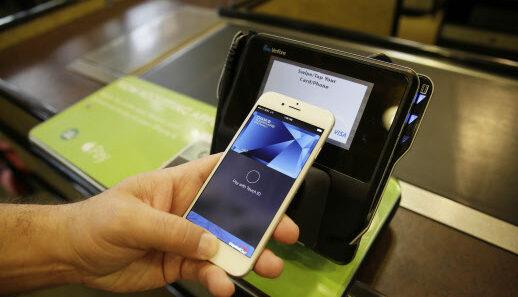Africa-Press – Lesotho. The COVID-19 pandemic has precipitated a race among African Banks to become fully digital as consumers increasingly demand more personalised service across multiple channels.
The rise in mobile and digital banking is likely to surpass the banking sector’s revenue predictions on a continental scale which were expected to increase from $86 billion in 2017 to $129 billion in 2022 according to a study conducted by McKinsey and published in February 2018.
Africa is the second-largest banking market in the world in terms of growth and profitability. Although a large proportion of the continent’s population remains unbanked, the explosion of the digital banking phenomenon due to emergence and ubiquity of mobile technology has, and continues to make immense contributions in bridging this gap.
The report also found that the number of Africans with bank accounts had increased from 170 million in 2012 to nearly 300 million in 2017. In the next five years, this figure is expected to reach 450 million.
The African consumer has been at the heart of Africa’s mobile banking revolution. In many ways, it is the discerning African consumer who has turned Africa into a continent blazing the global trail in mobile banking and offering a benchmark for developed markets on where banking is headed.
When Cellulant pivoted from mobile content services to venture into digital banking and payments in 2007, it was to solve a customer pain point: funding their mobile wallets from their bank accounts in order to make payments and transfer money in a cheaper, faster and more convenient way.
This was about the same time Safaricom’s mobile money service Mpesa had just been launched in Kenya. Cellulant became the first company to connect Mpesa to a bank. Little did we know that this simple solution we had built would revolutionise banking across Africa.
As the fintech revolution began, the very processes and legacies within the banking sector that had been, and continue to be, its source of strength, stability and dependability prevented the sector from being less risk-averse even when consumer needs were changing as the world moved to the digital age.
Since that first connection of a bank to a telco in 2007, most banking institutions saw the writing on the wall, a radical shift needed to happen in the banking business model towards more focus on innovation.
That gap created the opportunity for Fintech to disrupt banking. Nimble, flexible, risk-taking and with a sprinkling of disruption embedded in its DNA; Finetechs is exactly what banking needed.
The result has been a partnership in which banks can provide innovative customer-friendly solutions with greater convenience that adds value without compromising on its legacy as financial institutions. This co-opetition (cooperative competition) between Banks, Telcos and Fintechs has evolved over time.
There was unnecessary friction at the start of what would grow to become an effective symbiosis with the point of convergence always being on how to continue innovating and building cases that are relevant to consumers.
The portrayal of an unending tug of war ensued. However, it’s unnecessary. It has and continues to be – for the most part – a co-opetition towards a shared goal: providing the best service and value for money to the consumer. The last three months have been a watershed moment for banking globally.
Restrictions on movement and the enforcement of social distancing measures by governments have seen greater convergence of players in the banking sector, Fintechs, Telcos and regulators in working together to ensure delivery of financial services.
This has also been one of the best times for banks to demonstrate their ability to serve customers outside of typical branches. The various digital channels are no longer value-added services, but rather a determining factor on whether the bank survives during this period or sinks.
There has been a realisation from the banking sector that fintechs can make excellent partners. For those to whom this was clear much earlier on, innovation took the precedent in driving their business model. For most, this has been actualised through strategic partnerships with Fintechs.
The result has been a hotbed of innovative products and services and an omnichannel banking approach that uses various digital channels such as USSD (SMS banking), internet and mobile banking to create a more convenient and affordable experience.
The COVID-19 pandemic has catalyzed the adoption of mobile and digital banking and has won over consumers across mostly older demographics that were once sceptical.
This is an opportunity for the banking sector to push the envelope on innovation build solutions that meet the customer needs wherever they are. Social media usage in Africa continues to skyrocket and is rivalling Asia despite being a less developed market with a smaller population.
More than 15% of people online in Africa are currently using the platform, compared to 11% in Asia. The 2019 Global Digital Report offers some very interesting statistics on Africa’s digital landscape of which every retail business should use as a prism through which to see the future.
Africa’s internet penetration stands at 36% out of a population of 1.3B. The number of those actively using social media, mostly from their mobile phones stands at 216 million (17% penetration).
In 2019 alone, active social media users grew by 13%. Africa has become the second fastest-growing market in the world for electronic payments after Asia-Pacific.
Moreover, about 40% of Africans now prefer to use digital channels for banking transactions. Our approach of omnichannel banking needs to move from our traditional solution building based on the channels we own.
Omnichannel has gone just beyond internet banking, mobile and SMS banking. It is now transitioning into any touchpoint and interface where the customer is spending a lot of time. Social media is increasingly becoming that touchpoint.
For More News And Analysis About Lesotho Follow Africa-Press






